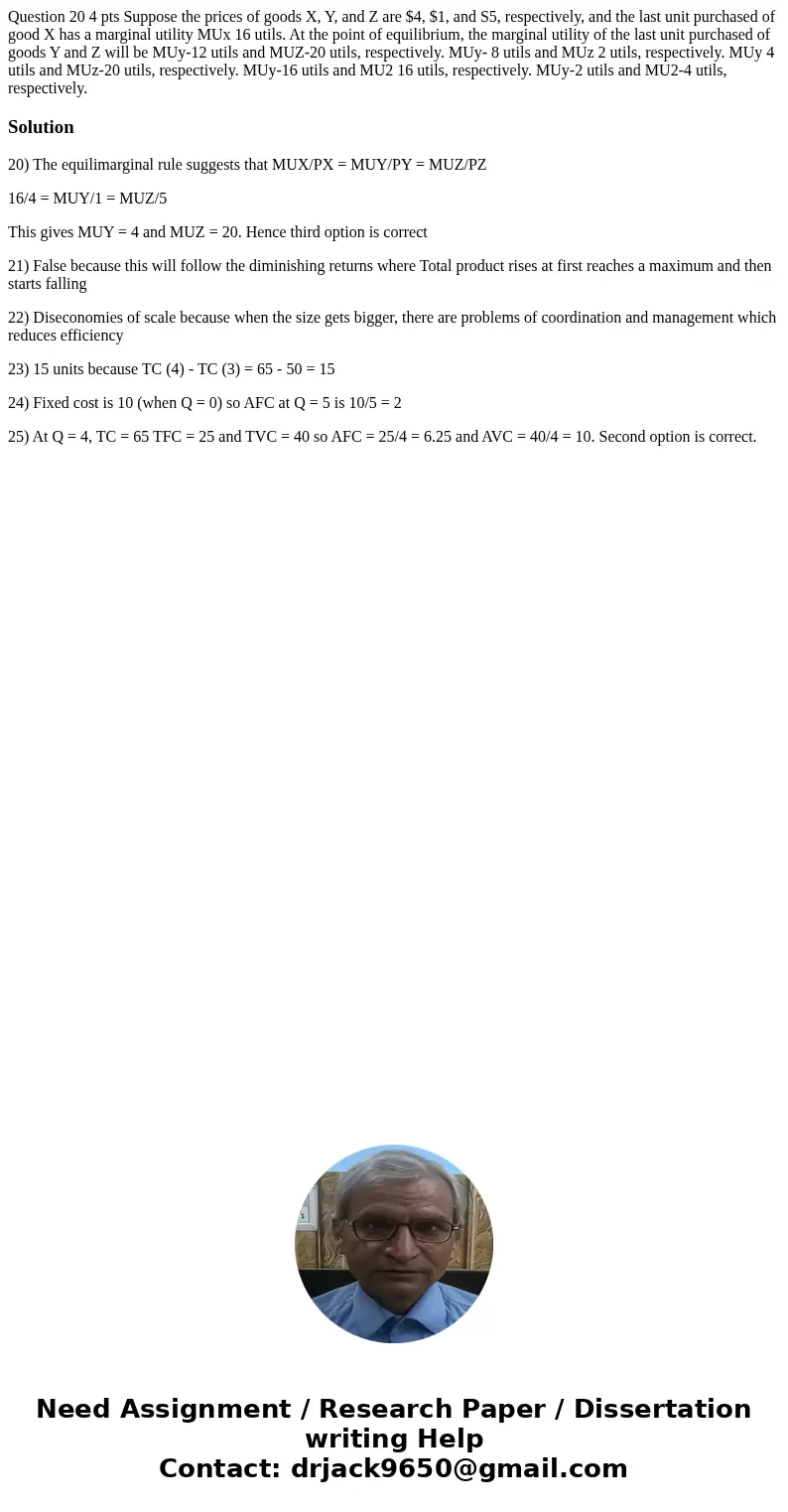Question 20 4 pts Suppose the prices of goods X Y and Z are
Question 20 4 pts Suppose the prices of goods X, Y, and Z are $4, $1, and S5, respectively, and the last unit purchased of good X has a marginal utility MUx 16 utils. At the point of equilibrium, the marginal utility of the last unit purchased of goods Y and Z will be MUy-12 utils and MUZ-20 utils, respectively. MUy- 8 utils and MUz 2 utils, respectively. MUy 4 utils and MUz-20 utils, respectively. MUy-16 utils and MU2 16 utils, respectively. MUy-2 utils and MU2-4 utils, respectively. 
Solution
20) The equilimarginal rule suggests that MUX/PX = MUY/PY = MUZ/PZ
16/4 = MUY/1 = MUZ/5
This gives MUY = 4 and MUZ = 20. Hence third option is correct
21) False because this will follow the diminishing returns where Total product rises at first reaches a maximum and then starts falling
22) Diseconomies of scale because when the size gets bigger, there are problems of coordination and management which reduces efficiency
23) 15 units because TC (4) - TC (3) = 65 - 50 = 15
24) Fixed cost is 10 (when Q = 0) so AFC at Q = 5 is 10/5 = 2
25) At Q = 4, TC = 65 TFC = 25 and TVC = 40 so AFC = 25/4 = 6.25 and AVC = 40/4 = 10. Second option is correct.

 Homework Sourse
Homework Sourse